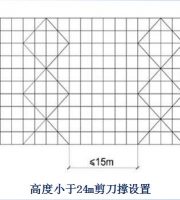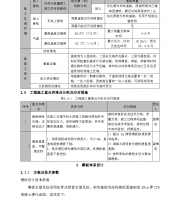Establish a regular notification mechanism to publicize the projects under construction that do not meet the requirements of allocation standards.
29, the housing and urban rural development departments of all provinces and autonomous regions, the housing and urban rural development (Management) Commission of municipalities directly under the central government, and the housing and Urban Rural Development Bureau of Xinjiang production and Construction Corps: for implementation The guiding opinions of the Ministry of housing and urban rural development and other departments on accelerating the cultivation of workers in the construction industry in the new era (Jianshi [2020] No.
Skilled workers include general skilled workers and special construction workers.
Work objectives: by 2025, strive to achieve the proportion of intermediate workers in the construction site of projects under construction accounting for 20% of skilled workers, and the proportion of skilled workers of senior workers and above accounting for 5% of skilled workers, and preliminarily establish the allocation system of skilled workers on the construction site.
The general technical workers are divided into primary workers, intermediate workers, senior workers, technicians and senior technicians; the types of work include masonry workers, reinforcement workers, formwork workers and concrete workers.
76) Implementation.
All localities can make timely adjustments in combination with the new types of work produced by the development of the industry.
On the basis of investigation, according to the actual level of project construction management and construction workers’ skills in the region, formulate corresponding allocation standards according to work objectives, project type, scale and implementation stage, and clarify the proportion of skilled workers in the total number of workers on the construction site and the requirements for the allocation proportion of workers of different types of work and skill levels.
Special construction operators include construction electricians, construction scaffolders, construction hoisting signal riggers, construction hoisting machinery drivers, construction hoisting machinery installation and disassembly workers, high-altitude operation basket installation and disassembly workers, and those recognized by the competent department of housing and urban rural construction of the people’s government at or above the provincial level Other special operators, etc.
In the implementation, we should pay attention to summarizing typical experience and practices and actively promote them.
All localities can adjust the new types of work in combination with the development of the industry.
By 2035, strive to achieve the proportion of intermediate workers in the construction site of projects under construction accounting for 30% of skilled workers, and the proportion of skilled workers of senior workers and above accounting for 10% of skilled workers, and establish the allocation system of skilled workers for all types of work on the construction site.
For the specific setting, please refer to the notice of the general office of the Ministry of housing and urban rural development on printing and distributing the catalogue of occupational types of work in the housing and urban rural construction industry (JBR [2017] No.
II.
General skilled workers are divided into junior workers, intermediate workers, senior workers, technicians and senior technicians; The types of work include masonry worker, reinforcement worker, formwork worker, concrete worker, etc.
The construction market supervision department, together with the project quality and safety supervision department, shall formulate the inspection manual, take the compliance of the equipment standards as one of the contents of the construction market and project quality and safety inspection of the projects under construction, dynamically carry out daily patrol inspection and random inspection, and rectify those that do not meet the requirements within a time limit.
Preliminarily establish the allocation system of skilled workers on the construction site.
main tasks (I) scientifically and reasonably formulate standards..
Construction special operators include construction electricians, construction scaffolders, construction hoisting signal riggers, construction hoisting machinery drivers, construction hoisting machinery installation and disassembly workers, high-altitude operation basket installation and disassembly workers, and other special operators recognized by the competent department of housing and urban rural construction of the people’s government at or above the provincial level.
105) guide all localities to do a good job in the allocation standard of skilled workers on the construction site (hereinafter referred to as the allocation standard) Formulate the work, strengthen the allocation of skilled personnel on the construction site, reduce hidden dangers of project quality and safety, and improve project quality.
We should go deep into the grass-roots level and the construction site to carry out research, accurately grasp the skill level of construction workers in the region, and ensure that the allocation standards are effective.
the specific setting shall refer to the notice of the general office of the Ministry of housing and urban rural development on printing and distributing the catalogue of occupational types of work in the housing and urban rural construction industry (Jian ban Ren [2017] No.
Recently, the general office of the Ministry of housing and urban rural development issued the notice on developing the standard for the allocation of skilled workers on the construction site (hereinafter referred to as the notice), which proposed that by 2025, the proportion of intermediate workers in the construction site of projects under construction should reach 20%, and the proportion of skilled workers of senior workers and above should reach 5%, Initially establish the allocation system of skilled workers on the construction site.
Incorporate the compliance of equipment standards into the local industry quality and safety evaluation system and the integrity evaluation system of relevant enterprises and project leaders in accordance with relevant regulations, so as to promote the formation of a benign environment for determining the market on site.
By 2025, strive to achieve that the proportion of intermediate workers in the construction site of the project under construction will reach 20%, and the proportion of skilled workers of senior workers and above will reach 5%.
Regularly improve the allocation standards and gradually increase the proportion of high-level skilled workers in the region in all skilled workers.
The relevant matters are hereby notified as follows: 1.
Strengthen the linkage between the market and the site.
By 2035, strive to achieve the proportion of intermediate workers in the construction site of projects under construction accounting for 30% of skilled workers, and the proportion of skilled workers of senior workers and above accounting for 10% of skilled workers, and establish the allocation system of skilled workers for all types of work on the construction site.
Give full play to the main role of enterprise skill training, promote the mutual promotion between skill training and on-site construction, and encourage enterprises and industry associations to actively hold various skill competitions to promote training and training through competition.
Skilled workers include general skilled workers Technical workers and special construction workers.
Seriously carry out skill training.
At the same time, the corresponding replacement calculation method between different levels of workers is defined in the allocation standard.
Strengthen information application.
The main task is to formulate standards scientifically and reasonably.
The main contents of the notice are as follows: it is generally required that corresponding standards for skilled workers on the construction site shall be formulated for new, reconstructed and expanded housing construction and municipal infrastructure projects.
When calculating the allocation of workers, high-level skilled workers can replace low-level skilled workers according to a certain proportion.
Strengthen supervision and inspection.
Notice of the general office of the Ministry of housing and urban rural development on the formulation of standards for the allocation of skilled workers on the construction site Jian ban Shi [2021] No.
The work requires all localities to raise awareness, strengthen organization and leadership, formulate specific work implementation plans as soon as possible, clarify work tasks, division of responsibilities and time arrangement, formulate and issue allocation standards before the end of 2021, and report to the Ministry of housing and urban rural development for the record.
All localities shall timely feed back the situation and problems encountered in promoting the work to the construction market supervision department of the Ministry of housing and urban rural development.
The Ministry of housing and urban rural development will rely on the national construction workers management service information platform to collect and summarize the allocation of skilled workers for local projects under construction, and regularly report the progress of relevant work.
In accordance with the unified deployment and requirements of the Ministry of housing and urban rural development, improve the organization and implementation system of skill training for construction workers in the region.
Overall, it is required to formulate corresponding allocation standards for skilled workers on the construction site for new, reconstructed and expanded housing construction and municipal infrastructure projects.
III.
By 2035, strive to achieve the proportion of intermediate workers in the construction site of projects under construction accounting for 20% of skilled workers 30%, the proportion of skilled workers of senior workers and above accounts for 10% of skilled workers, and establish a skilled worker allocation system for all types of work on the construction site.
Strengthen information sharing with the training management information system for employees in the housing and urban-rural construction industries, timely analyze and record the skill level, training assessment and evaluation, salary and Employment Evaluation of construction workers, promote enterprises to release information such as market-oriented prices of construction workers, and guide construction enterprises to reasonably determine the salary standards of construction workers, And link the salary with the skill level and Employment Evaluation of construction workers.
Continuously improve the real name system of construction workers and smart site management systems in the region, and increase the standard compliance assessment function.
76).




